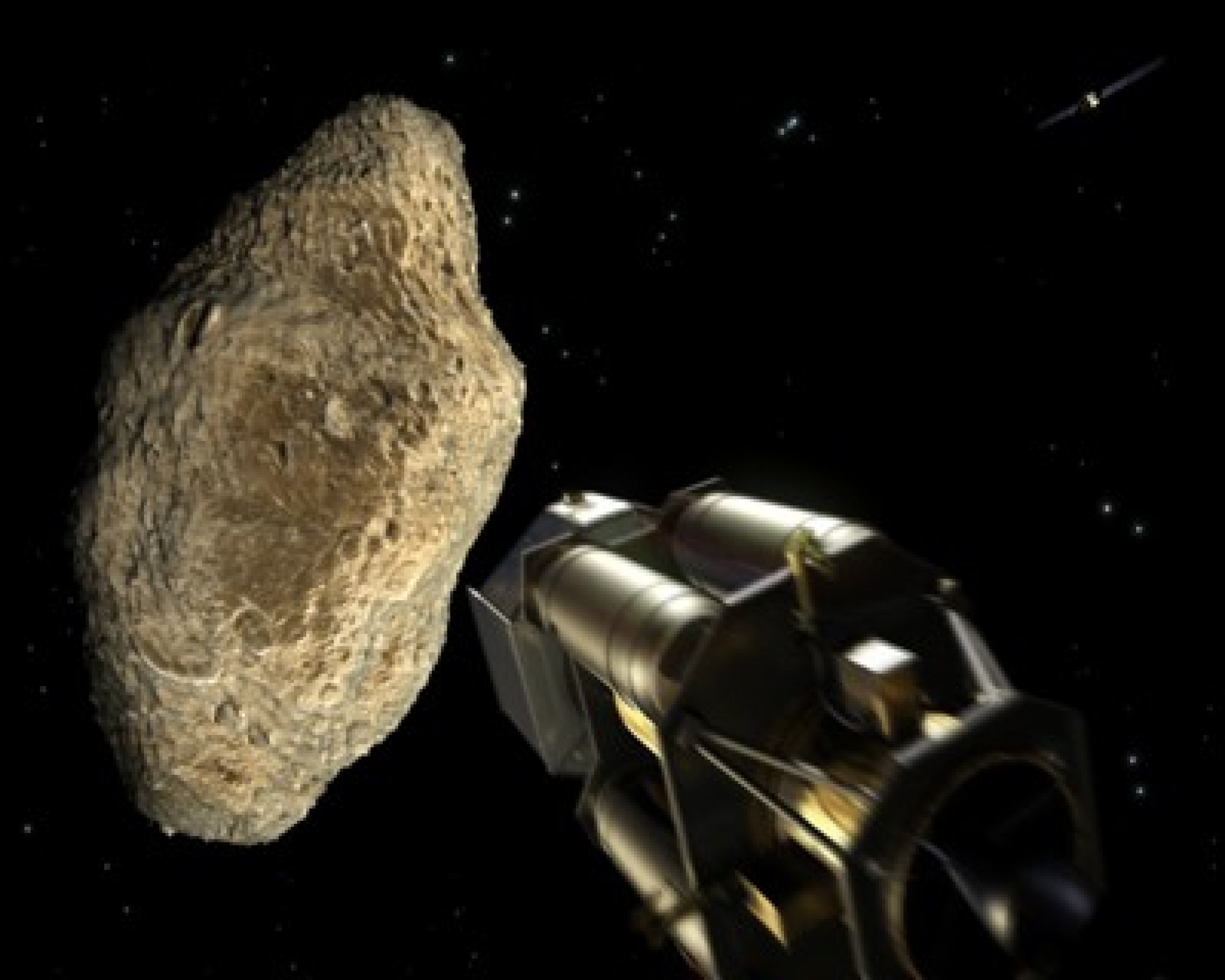ESA Planning Mission to Protect Earth from Potential Asteroid Collision [PHOTOS]
The European Space Agency is looking to test to see if it's possible divert an asteroid headed for Earth.
The mission, called Don Quixote, is already underway at the ESA, and will help the agency learn more about how the Earth can defend itself against any potential asteroid collision threat. The project is slated for 2015.
Below is some information regarding the Don Quixote mission as reported on the ESA's Web site.
The ESA's Don Quijote mission concept consists of two spacecraft which are to be launched in separate interplanetary trajectories:
An Orbiter spacecraft, called Sancho After arriving to the target asteroid and be inserted into an orbit around it, it will measure with great accuracy its position, shape, mass, and gravity field for several months before and after the impact of the second spacecraft. In addition, the Orbiter will operate as a backup data relay for transferring all the data collected by the Impactor during approach and image the impact from a safe parking position. It will also investigate the surface composition of the asteroid and, after completion of the primary objective, carry out the ASP-DeX.
An Impactor spacecraft, named Hidalgo After following a very different route from that of the Orbiter, the spacecraft will Impact an asteroid of approximately 500 m diameter at a relative speed of about 10 km/s. This spacecraft will demonstrate the ability to autonomously hit the target asteroid based on onboard high-resolution camera.
Mission objectives
The primary objective of the Don Quijote concept is to impact the target Near-Earth Asteroid (NEA) and to be able to determine the deflection resulting from the impact. To achieve this, it will measure with extreme accuracy the asteroid's position in space before and after impact.
There is also a secondary objective, involving the so-called Autonomous Surface Package Deployment Engineering eXperiment (ASP-DeX). In this experiment a small device, an Autonomous Surface Package or ASP, would be released from the Orbiter spacecraft while it's on orbit about the asteroid. It would then passively free-fall towards the asteroid surface after its release, and touchdown within a certain distance of a target landmark, most likely the crater resulting from the impact of the Hidalgo spacecraft.
In addition, part of the mission secondary goals are to and study the asteroid's surface chemical composition and the characterization of the thermal and mechanical properties of the asteroid surface.
Impactor spacecraft
The mission of the Impactor spacecraft is a peculiar one: the spacecraft should remain in a dormant state during most of its lifetime until the last days of asteroid approach where the autonomous guidance takes over and targets it toward the asteroid. During the cruise phase only minimum functions are required but before the impact all the sub-systems have to be up and functional with high level of reliability.
A major system design constraint is also on the spacecraft mass that (contrarily what normally is required) shall be above a certain threshold to achieve the required asteroid orbit deflection and lower than the launch system escape performance. In order to increase the impact mass, the propulsion module is not jettisoned at escape but is kept attached during the whole mission until impact as a ballast.
The major design drivers for the Impactor spacecraft are:
Advanced on-board computers and high resolution camera to provide the required optical autonomous navigation and target with the required 50m accuracy.
No moving appendages (solar arrays and antennas), in order to achieve the stringent AOCS pointing accuracies.
No main propulsion required because of the ballistic trajectory; all the trajectory correction manoeuvres will be performed with the RCS.
Low-cost approach by re-using an existing design. For the structure of the spacecraft, the Lisa Pathfinder science module was considered.
Orbiter spacecraft
For the design of the Orbiter, a re-use of the SMART-1 bus was considered during the internal mission feasibility studies. Though this approach provides a good reference case to assess mission costs and the maturity of the technologies, there are some limitations, mainly given by the availability of a single PPS-1350 engine, a fixed Xenon tank capacity that limits the propellant mass, and finally a given bus structure.
In order to accomplish the mission, some modifications need to be performed on the SMART-1 bus.
The input power to the Solar Electric Propulsion system requires an increased solar array surface of one extra panel per wing.
A different communication subsystem is required, consisting of two-degree-of-freedom steerable 70 cm high gain antenna, medium and low gain antennas and a UHF antenna for the communication with the Impactor during targeting phase and the ASP.
To learn more go to the ESA's Web site.



© Copyright IBTimes 2025. All rights reserved.






















